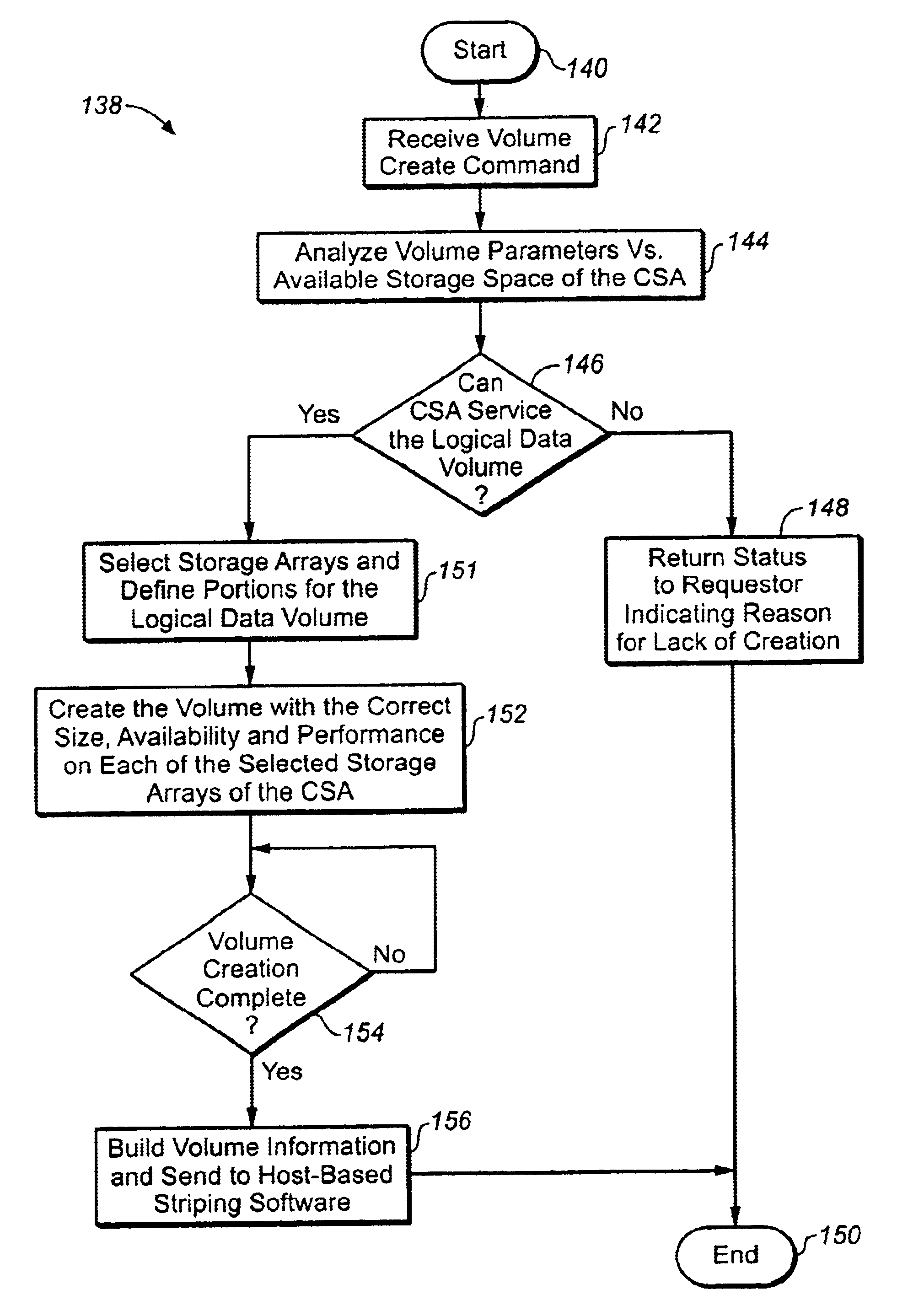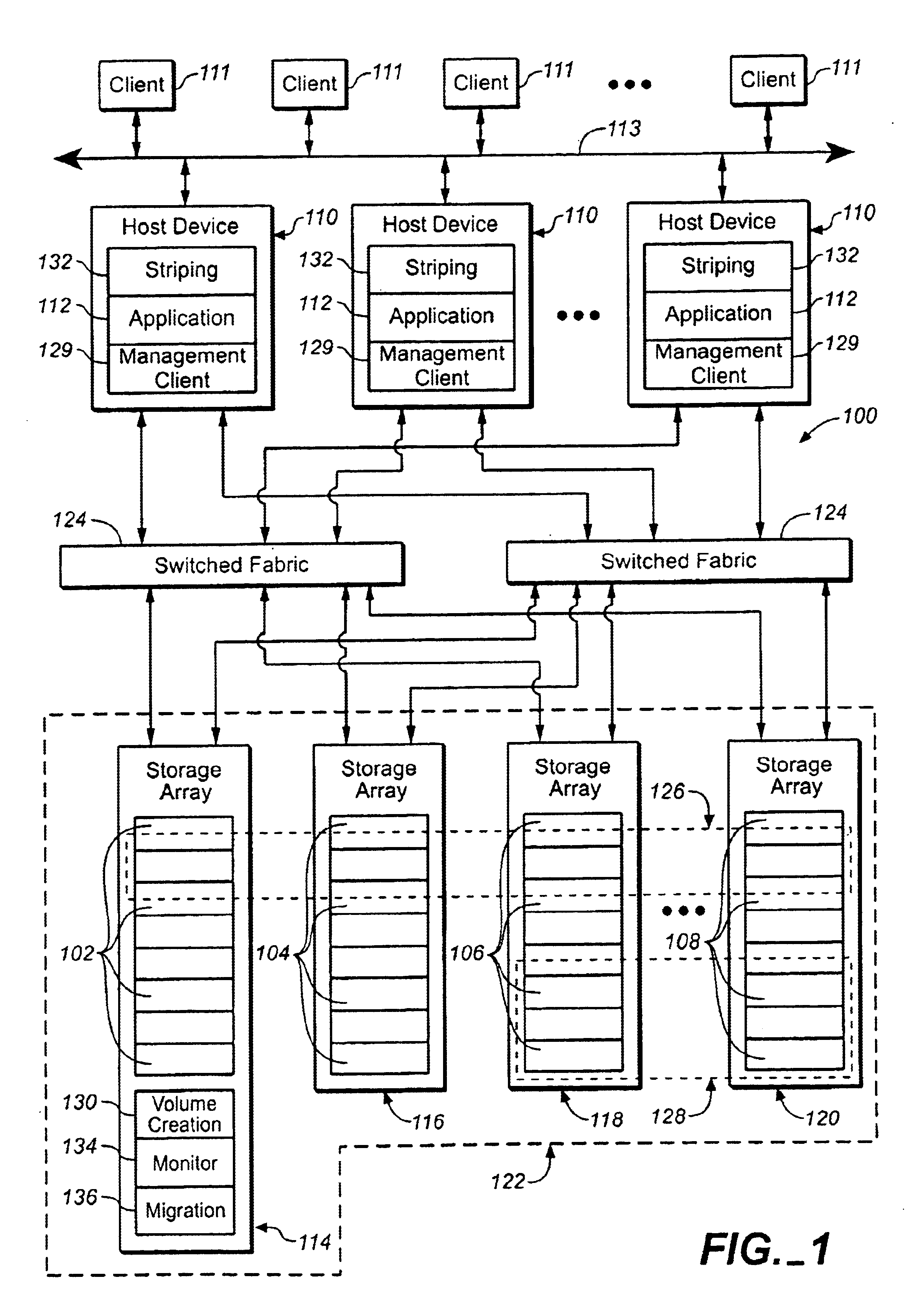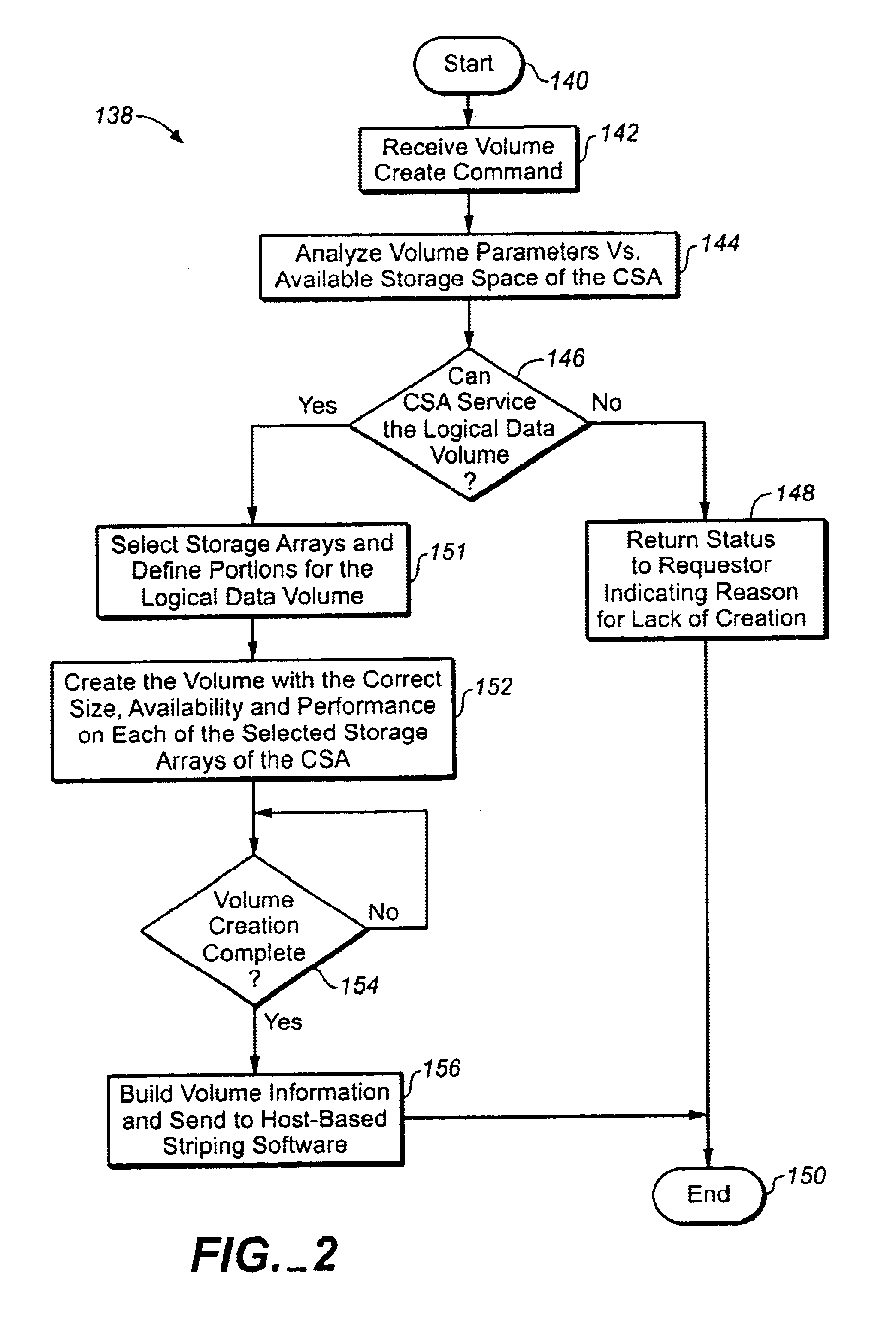Configuring and monitoring data volumes in a consolidated storage array using one storage array to configure the other storage arrays
a data volume and storage array technology, applied in the field of con, can solve the problems of insufficient bandwidth and transaction rate capacity of single storage device, insufficient bandwidth and transaction rate requirements of many modern software applications, and inability to meet the high bandwidth and/or transaction rate requirements of individual storage arrays, so as to relieve users of the burden
- Summary
- Abstract
- Description
- Claims
- Application Information
AI Technical Summary
Benefits of technology
Problems solved by technology
Method used
Image
Examples
Embodiment Construction
[0020]A storage area network (SAN) 100, as shown in FIG. 1, generally includes several conventional storage devices 102, 104, 106 and 108 that are accessed by one or more conventional host devices 110, typically on behalf of one or more conventional client devices 111 or applications 112 running on the host devices 110. The SAN 100 also typically services the computer storage needs of a business or enterprise (not shown) wherein many of the enterprise's computers (e.g. the client devices 111) are networked together. Each host device 110 is connected to one or more of the client devices 111 by a conventional communication link 113, such as a local area network (LAN). The storage devices 102, 104, 106 and 108 (e.g. hard drives) are incorporated in conventional high-volume, high-bandwidth storage arrays 114, 116, 118 and 120, which in turn form a consolidated storage array (CSA) 122. Conventional switched fabrics 124 connect each of the host devices 110 to each of the storage arrays 11...
PUM
 Login to View More
Login to View More Abstract
Description
Claims
Application Information
 Login to View More
Login to View More - R&D
- Intellectual Property
- Life Sciences
- Materials
- Tech Scout
- Unparalleled Data Quality
- Higher Quality Content
- 60% Fewer Hallucinations
Browse by: Latest US Patents, China's latest patents, Technical Efficacy Thesaurus, Application Domain, Technology Topic, Popular Technical Reports.
© 2025 PatSnap. All rights reserved.Legal|Privacy policy|Modern Slavery Act Transparency Statement|Sitemap|About US| Contact US: help@patsnap.com



